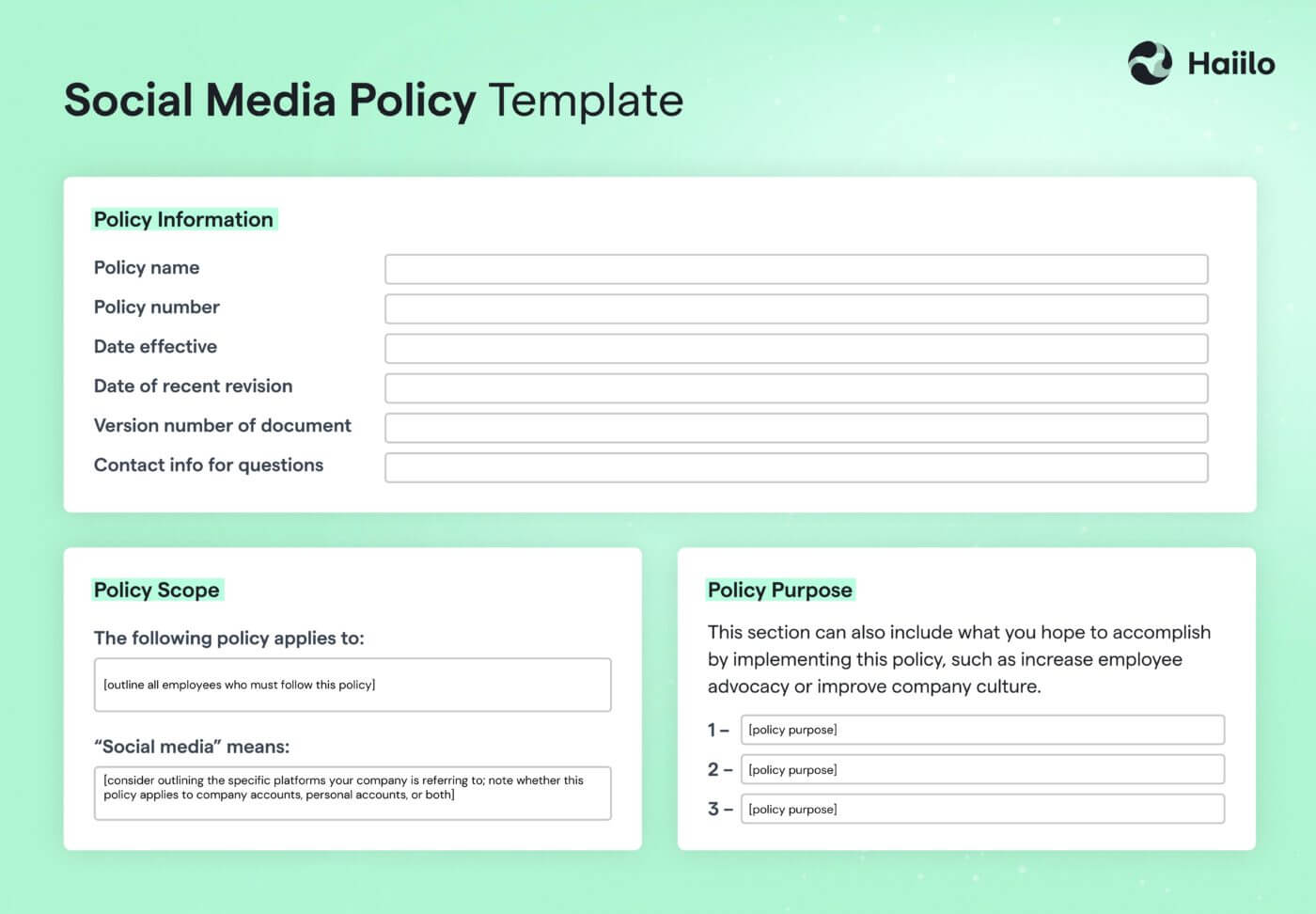Brand advocacy can be one of the most powerful ways to build brand awareness, drive new leads, close new customers, attract and hire new job candidates.
Moreover, Weber Shandwick discovered that 21% of employees within organizations were estimated to be brand advocates and another 33% have the potential to be ones. However, some organizations are still not sure about how to leverage this huge potential.
In this blog post, we will go over the importance of brand advocacy and best practices for creating, launching and managing a successful brand advocacy initiative.
Employee advocacy is the best way to do brand advocacy. Get the right EA platform to achieve success!
What is Brand Advocacy?
Brand advocacy is a term used to describe actions taken by people who love your brand and continuously support your organization by promoting products and services to new customers and prospects.
Having brand advocacy programs help your company become visible to larger audiences, build stronger brand awareness, and increase revenue while eliminating costs associated with other traditional marketing campaigns.
Therefore, having brand advocates within your organizations can bring significant value to your business.
Just consider this piece of information:
According to results from the Kredible Employee Advocacy Study, employee advocacy programs that involve at least 1,000 active participants can generate $1,900,000 in advertising value.
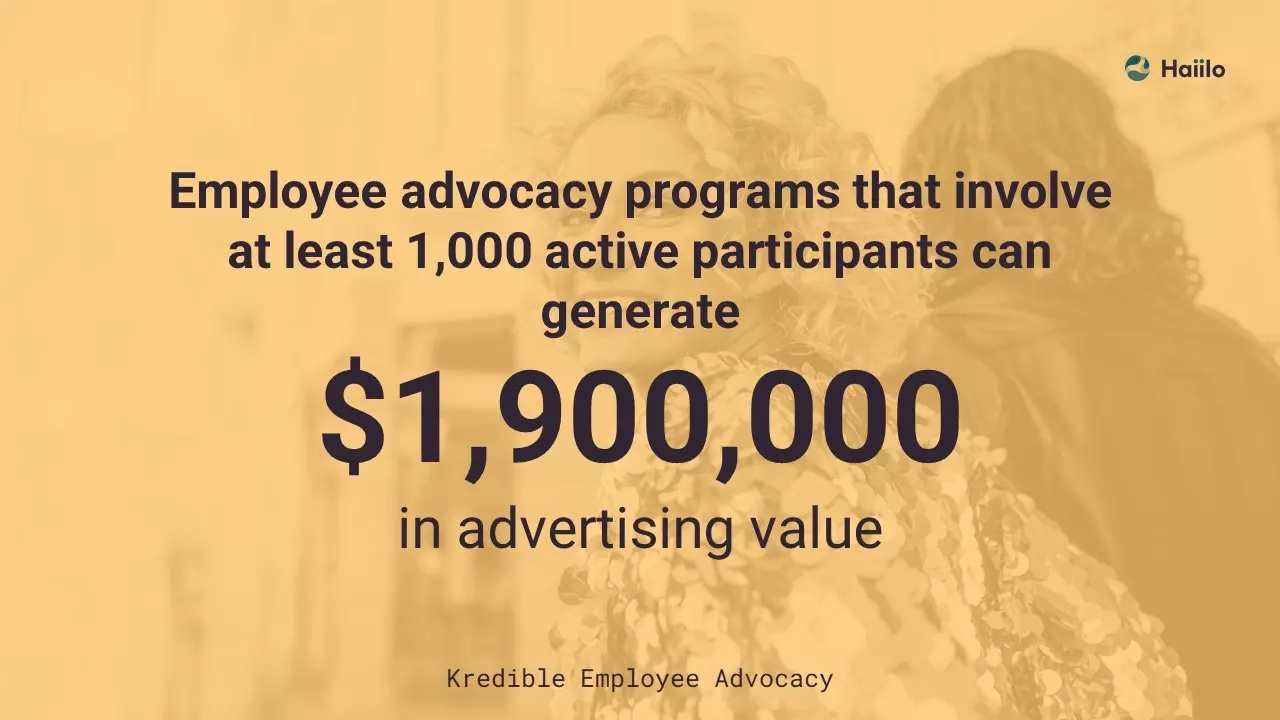
Who Can Be a Brand Advocate?
A brand advocate can be anyone who participates in brand-promotion actions and, therefore, supports your company’s growth.
The 4 most common groups of brand advocates include:
- Employees: Your employees have the most knowledge about your existing products and services and therefore, can be your best brand advocates. Moreover, large organizations can reach a much wider audience just by encouraging their employees to join the advocacy programs.
- Business partners: Strong partnerships and affiliate programs can also be a great source for widening the customer base and brand awareness.
- Influencers: Influencers are famous people with a lot of followers on different online platforms such as social media. Many organizations hire influencers to help them drive more visibility and sales.
- Customers: Having customers as brand advocates can be a beneficial and influential marketing tactic. As many prospects rely on existing customers’ reviews and word-of-mouth, customer advocacy is a powerful way to attract and close new clients.
Even though it would be great to have all these groups as brand advocates, this is often very hard to achieve. Influencers may be expensive, and customers may be hard to engage to participate in brand advocacy programs.
On the other side, employees are often considered as best brand advocates when it comes to both employer and corporate branding. Launching a simple employee advocacy program in your organization can go a long way in driving better business results.
Here, it is important to understand the difference among different generations in the workplace. A survey by The Marketing Advisory Network showed a clear difference between the generations when it came to sharing information about their workplace. 81% of Millennials share information about their job, compared to 72% of Generation Z and a mere 47% of Baby Boomers.
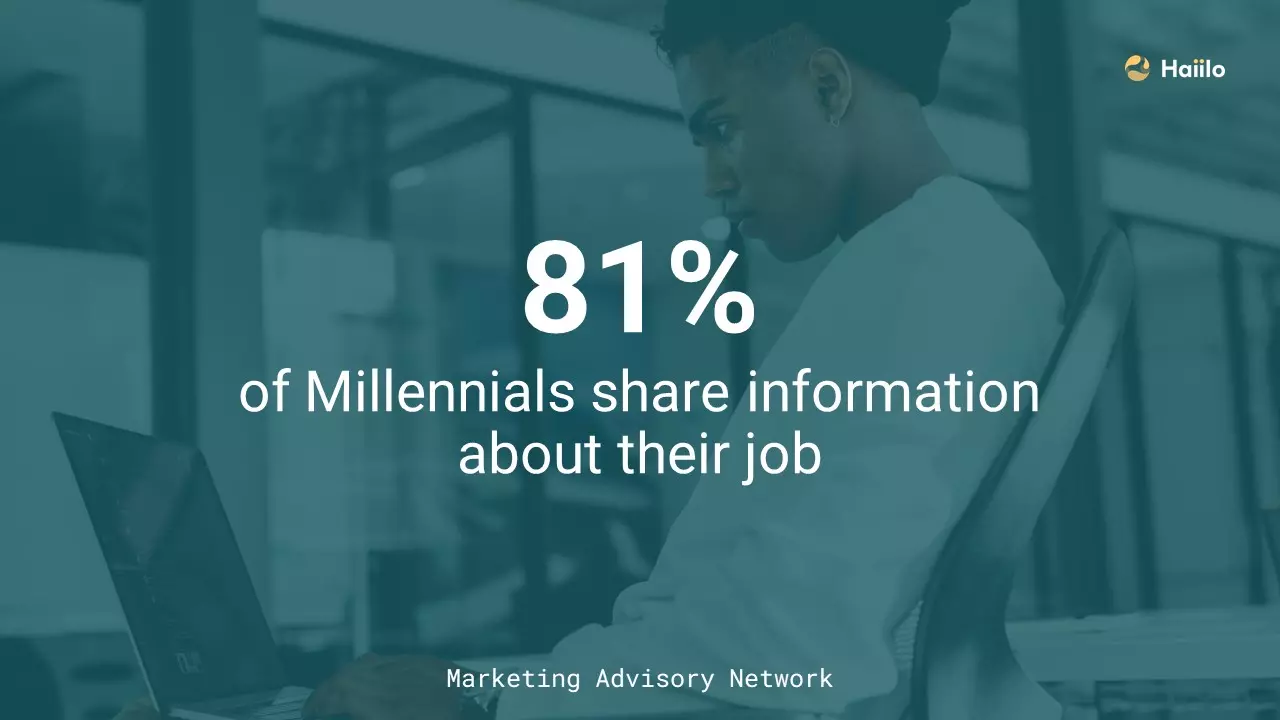
Brand Advocacy Challenges
Throughout this blog, you will learn more about the benefits of brand advocacy. However, even though organizations are well aware of these benefits, they still struggle to build, implement, launch and manage successful advocacy programs.
The image below represents the most common brand advocacy challenges such as difficulties to motivate employees to participate, inability to measure the success of brand advocacy programs, lack of employees’ and leadership’s buy-in, and improper technology that facilitate brand advocacy.
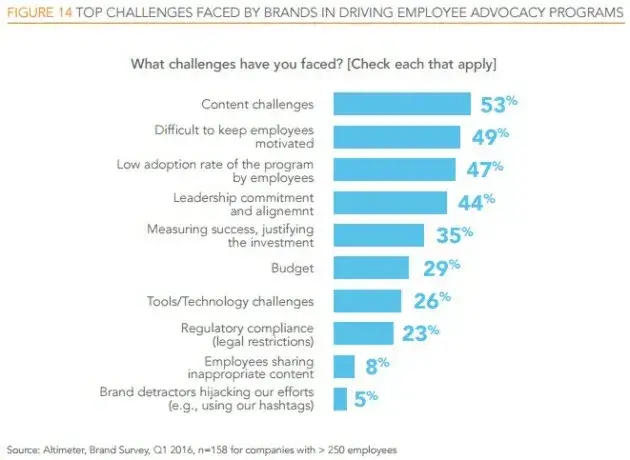
How to Build a Successful Brand Advocacy Program
LinkedIn found the employees of a company tend to have 10 times more followers than the company itself. To add, while only about 2% of employees reshare their company’s social posts, they are responsible for 20% of the overall engagement.
Therefore, many organizations and marketers are now looking for ways to encourage their employees and other stakeholders such as partners, contractors, and consultants to participate in their brand advocacy programs. However, organizations need to have well-set brand advocacy strategies in place in order to get the most of their stakeholders’ engagement.
Let’s take a look at some of the best practices for creating, launching, and managing brand advocacy programs.
1. Communicate the benefits to build trust and create a sense of purpose
One of the most important prerequisites for successful brand advocacy programs is getting employees’ and other stakeholders’ buy-in through proper internal communications.
Marketers, who are often responsible for managing advocacy initiatives, are responsible for explaining the benefits of brand advocacy in strengthening employees’ personal brands and helping their companies as a whole.
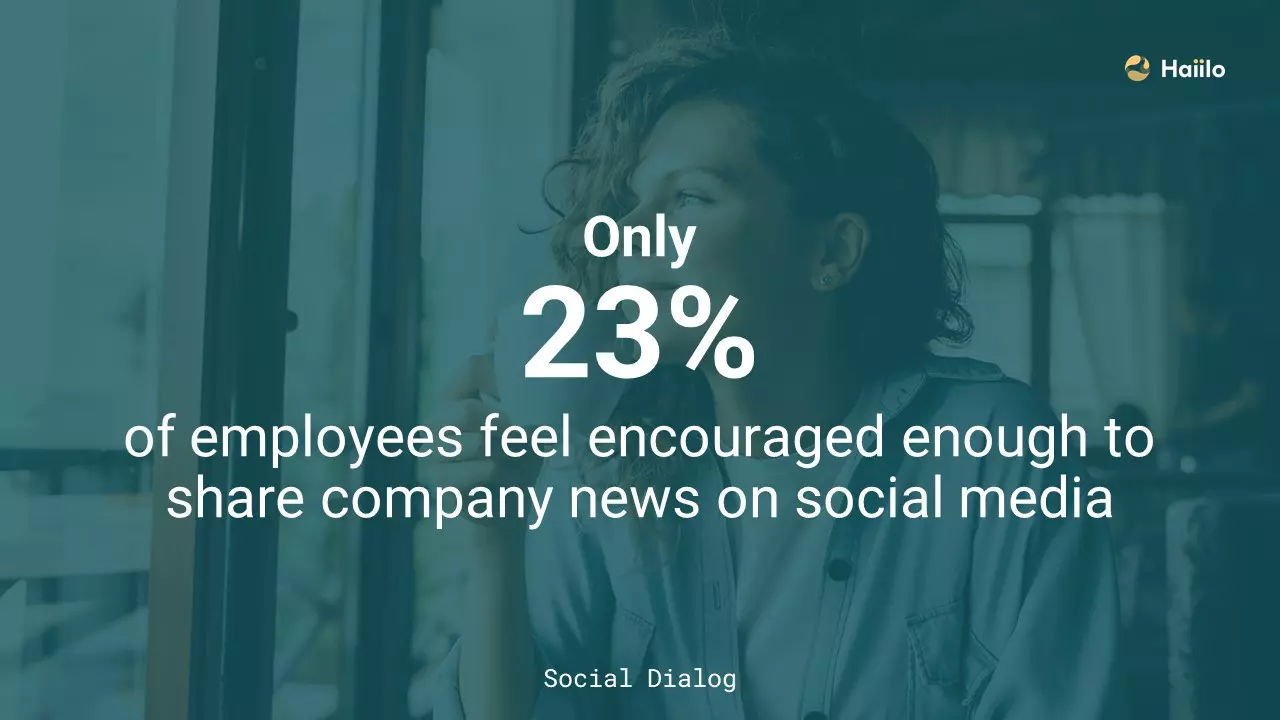
Furthermore, linking employees’ work to a broader organizational and societal purpose helps create trust, and employees who trust their employer are twice as likely to engage in employee advocacy.
📙 Also read: 10 Principles of Modern Employee Communications.
2. Define policies and train your advocates
While younger generations such as millennials and gen Z are confident with social media, others may not be. Also, many employees may not be sure about how and what to share externally. Hence, having advocacy training and guidelines in place is important.
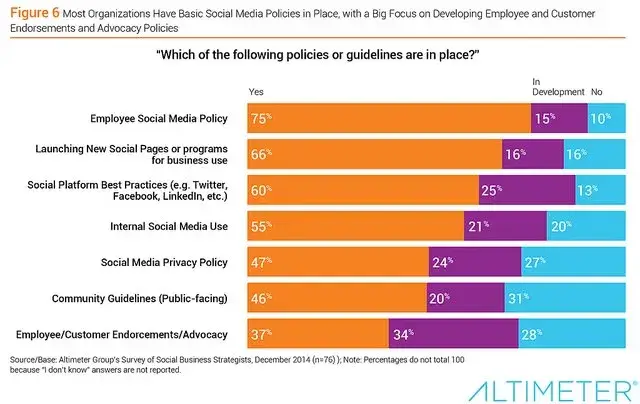
Organize short training sessions and internal marketing campaigns to ensure that everyone is aware of the policies, the ‘do’s and don’ts, and the goals of your brand advocacy programs.
3. Define goals, objectives and policies
Every advocacy initiative should have clear goals and objectives in order to keep employees and other stakeholders aligned. These goals vary based on the department launching the program. Whether it’s sales, marketing, or HR, the stakeholders should understand the ultimate advocacy KPIs.
Some of the specific goals and objectives your program can aim to achieve include:
- Increase company LinkedIn followers by X%
- Increase website traffic by X%
- Boost engagement on social media by X%
- Increase the number of MQLs or SQLs by X%
- Increase the number of qualified job applicants by X%
- Increase the number of Glassdoor reviews by X%
4. Create and distribute engaging internal content
The more engaging your internal content is, the more engaged your advocates will be. Today, employees don’t consume and share just any type of content. Therefore, curating engaging, fun, and relevant content is crucial for driving your advocates’ engagement in your brand advocacy programs.
Departments utilizing advocacy programs should have diverse content strategies by testing various content formats such as photos, infographics, videos, webinars, podcasts, and other formats your advocates will actually want to share.
However, many organizations still don’t have the access to the right tools and employee apps that enable them to get the most of their advocacy programs.
5. Reach the right audiences
Not every piece of content you create internally is relevant to all your advocates. Therefore, you need to be conscious of your advocates’ networks when creating content you want to amplify externally. In other words, you need content localization!
Employees from different departments, in different job roles, your contractors or external partners should have access to content relevant to them. Segmenting your internal audiences is crucial for driving their continuous engagement. It also allows your advocacy program to scale to the enterprise level.
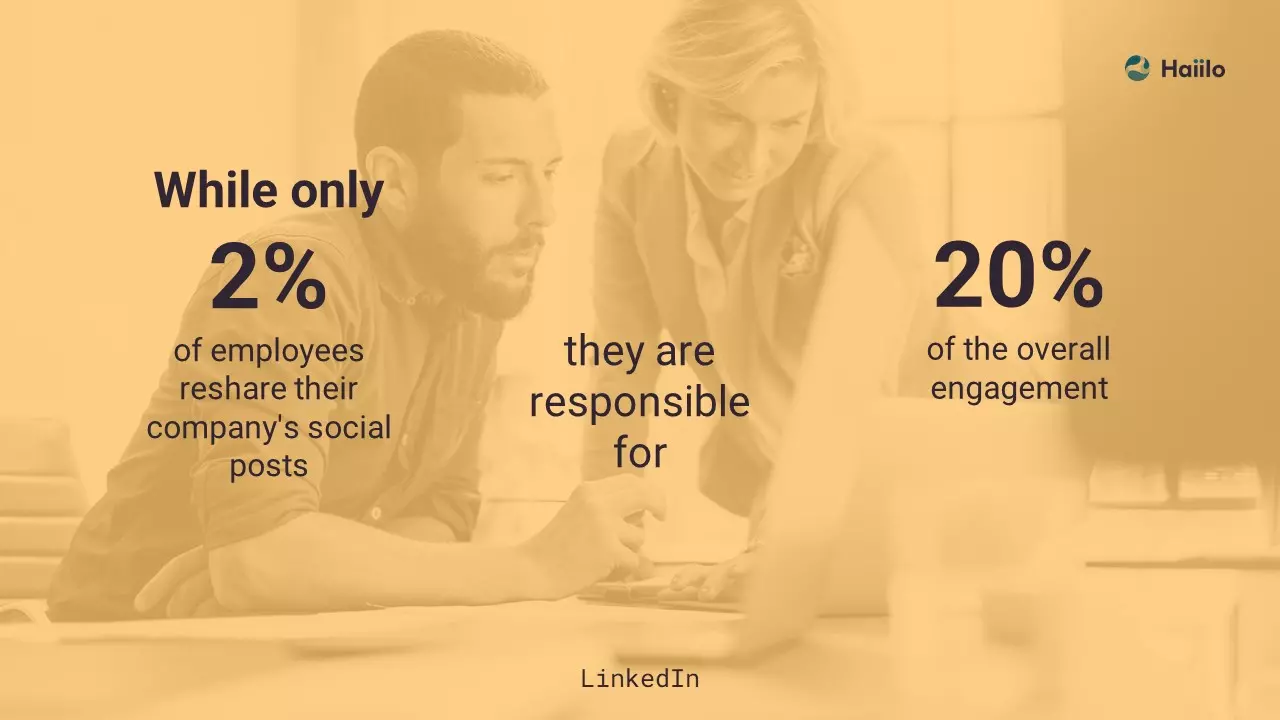
However, many organizations still don’t have the ability to target specific internal audiences. They don’t have ways to segment audiences based on their roles, departments, job functions and interests in order to ensure that the right advocates get the most relevant content.
6. Make it easy to find and share content
Another important prerequisite of every successful brand advocacy program is the ability for your employees and other partners to easily share internal content with their external networks.
As today’s workplaces are highly digital, employees expect exceptional experience with the technology they use within their organizations.
The easier you make it for them to share the content on social networks, relevant groups and forums, the bigger their engagement will be. They should be able to share your content in a matter of seconds. They should be able to easily find the content relevant to them.
This is why many organizations are now looking for advocacy solutions that enable them to crate personalized news feeds where advocates have a real-time view of everything that is going on within their organizations.

7. Spot and reward your best advocates
Many brand advocacy programs also have relevant recognition programs in place. In other words, if you want to motivate your advocates to participate and make advocacy one of your core values, you should also find ways to recognize and reward them for desired behaviors and actions.
Yet, many companies don’t have ways to spot their biggest advocates and measure the impact of their engagement. Without such data, it can be impossible to create structured and well-designed advocacy recognition programs.
8. Optimize based on data and insights
In order to continuously improve and optimize your brand advocacy initiatives, you should be able to measure what works well, and what has room for improvement.
If you can’t easily identify your best advocates, understand which type of content resonates best with your internal audiences, and which social networks your audiences are most active on, it is impossible to improve and get the highest possible return on investment.
Modern employee advocacy solutions like Haiilo Share don’t only provide such data, but also empowers program administrators with insightful and actionable recommendations for improvement. Every single advocacy campaign that you create can be closely tied with the ultimate KPIs you are trying to achieve.
The Benefits of Brand Advocacy
Brand advocacy can have many benefits for different department in your organization. Your employees’ word of mouth can go a long way in creating better brand awareness, generating new sales leads, attracting new job candidates and also strengthening employees’ personal brands.
Let’s now take a deeper look into how marketing, sales and human resources departments can benefits from brand advocacy.
Marketing
LinkedIn research shows that, on average, employees collectively have social networks ten times larger than a corporate brand does. That means your advocacy program can drastically extend your reach and brand awareness.
The Content Marketing Institute found that 89% of B2C marketers and 92% of B2B marketers use social media platforms as their primary channel for content distribution.
Additionally, employees’ shares are seen as more authentic than corporate shares, which is why people are more likely to engage with their content. The same LinkedIn research showed that employee shares have double the click-through-rate compared to corporate shares.

Another research by Hinge Research Institute and Social Media Today proved that organizations with employee advocacy programs have seen increased brand visibility, improved brand recognition and brand loyalty.
Sales
Another great research proves the value of brand advocacy when it comes to closing new deals and optimizing sales performance.
According to the research:
- Leads developed through employee social marketing convert 7 times more frequently than other leads.
- 20% to 50% of purchasing decisions are are driven by peer-to-peer marketing.
- Another study shows that a recommendation from a friend or family member makes 83% of Americans more likely to purchase that product or service.
- LinkedIn determined that 78% of social-sellers outperform peers who don’t use social media, and that they are 51% more likely to reach quota.
📙 Also read: How to Succeed in Social Selling with Employee Advocacy.
Human Resources
Employee advocacy can have a big impact on your company’s reputation as an employer, your ability to build a strong employer brand and attract high quality job candidates. Moreover, 91% of employers say that they use social and professional networks to recruit talent.
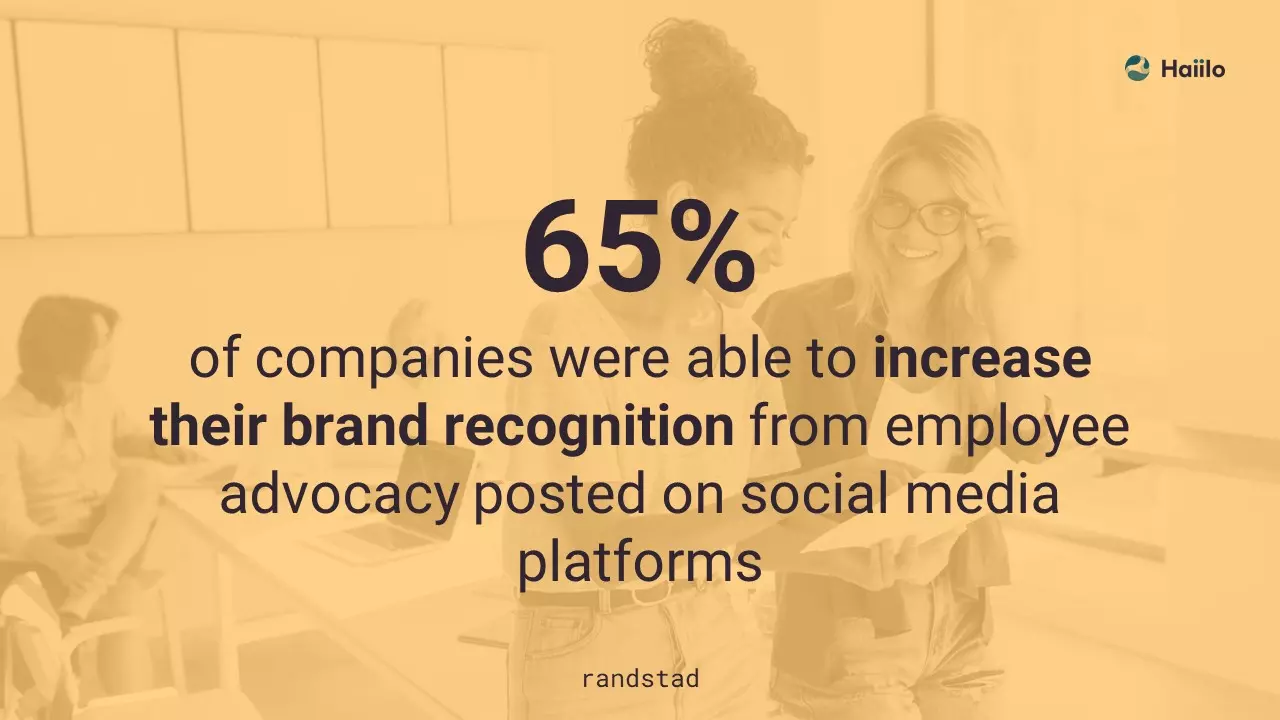
As younger generations often use social media platforms such as LinkedIn and Instagram to research about their potential employers, and candidates see employees’ stories and trustworthy, many organizations are now encouraging their employees to act as employer brand ambassadors.
📙 Also read: How to Succeed in Social Recruiting with Employee Advocacy.
15 Most Powerful Facts About Brand Advocacy
Now that you have learned about how to build a successful brand advocacy program, let’s take a look into some brand advocacy fasts that can’t be ignored.
These numbers really show the power of brand advocacy:
- 92% of online consumers trust recommendations from their social circles
- 42% of people distrust messages coming directly from brands
- 92% of global consumers trust User-generated content and word-of-mouth marketing more than advertising
- 49% of marketers believe that 20-40% of their leads come from referrals
- Brand messages are re-shared 24 times more frequently when distributed by employees’ through employee advocacy vs the brand
- Companies with a successful employee advocacy program are 58% more likely to attract, and 20% more likely to retain, top talent
- People pay over 2x more attention to posts and recommendations from their friends than brands or influencers
- 82% of consumers proactively seek referrals from peers before making purchasing decisions
- 28% of Millennials say they won’t try a product if their friedns don’t approve of it
- When a friend or family make a recommendation, it is 50x more likely to trigger a purchase
- On average, brands generate a 650% ROI for every dollar invested in influencer and advocacy marketing
- 86% of employees participating in an employee advocacy program said it positively impacted their careers
- 74% of people find posts from personal accounts more persuasive than posts from brand accounts
- 44.5% of people say they are more likely to apply for a job they saw a friend post on social media than the same job on a job board
- A message shared by your employees reaches 561% further than the same message shared by your brand account
Brand Advocacy Business Cases
As we saw in the previous section, the benefits of brand advocacy can be significant if employers have structured advocacy programs in place. Moreover, some organizations are not even aware that they already have advocates.
Those organizations who properly plan and organize their advocacy initiatives are much more successful in generating high ROIs. Let’s take a look into two impressive brand advocacy success stories.
IBM
This IBM employee advocacy case study is probably the most popular social selling story ever. By using social selling, IBM drove a 400% increase in sales.
In this case, the use of corporate content and corporate social accounts were used to support the sales team and drive new potential customers. Employee advocacy and collaboration across teams to find, filter and share great content is at the heart of their success.
Cisco
Cisco, winner of the Best Social Engagement award, knew that their IT advocates loved to talk with others in their field, so they set a goal to incentivize their growing community of advocates—called the Cisco Champions—to talk about the brand amongst their professional networks across social channels.
Through this campaign, Cisco advocates had the opportunity to enhance their professional skills, network with their fellow peers and highlight their knowledge and expertise. Cisco did this by featuring their Champions across the channels their advocate community uses.
For example, Champions were invited to showcase their knowledge on Cisco’s blogs, participate in #CiscoChat on Twitter and share the content on their social media profiles.
As Lindsay Hamilton, Social Media Marketing Manager at Cisco Systems said:
“Cisco Champions have created a consistent stream of timely and engaging content on an unprecedented scale. The program reaches a diverse audience and allows Cisco to earn the trust of the IT community with authentic and relevant content. Our community views the information as “for us, by us.”
Through the program, Cisco Champions generated 55,000 tweets about Cisco, wrote more than 200 Cisco-related posts on their websites and authored 100 posts on Cisco’s blogs (generating more than 44,000 hits and over 8,000 social media mentions).
Impressive isn’t it?
📙 Also read: How Jabra’s Content Reached 13 Million People.
Getting Started with Brand Advocacy
If you are looking to implement a brand advocacy program within your organization, schedule a demo.
Haiilo Share is helping organizations across the world in their advocacy initiatives by enabling employees and other stakeholders to easily share their company’s content externally and reach much bigger audience.
Powerful analytics and data enable program administrators to measure the success of their programs and make data-driven decisions for improvement. Our mobile-first and intuitive technology makes the entire ambassadorship experience fun and rewarding.




